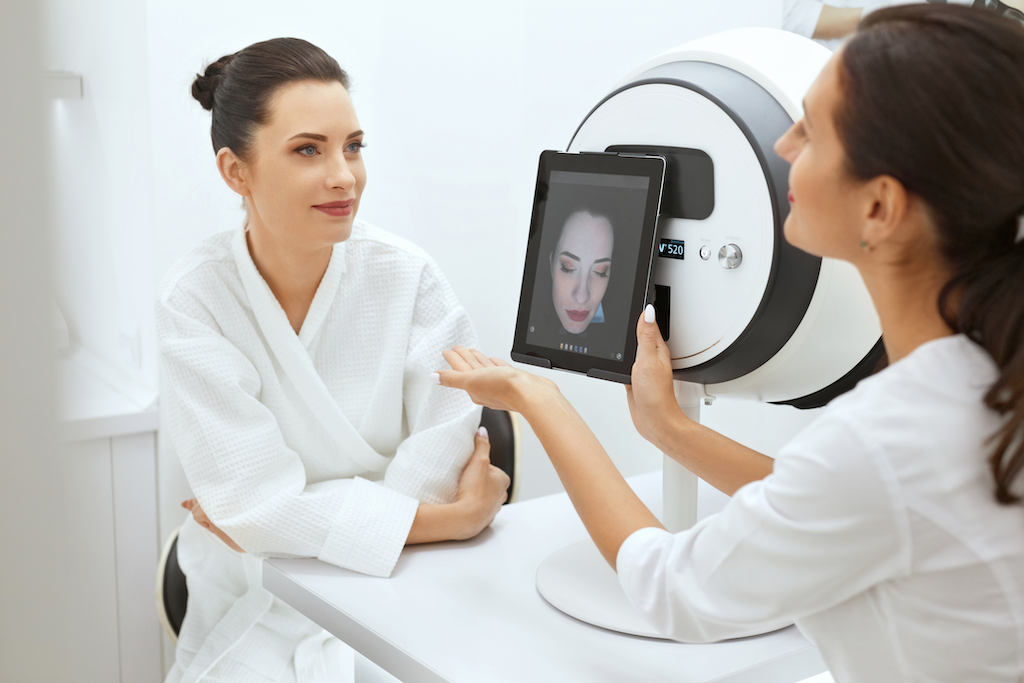Dr. Alina Sholar is a renowned plastic surgeon based in Austin, TX, the founder of Skin Science Soul by Dr. Sholar and her much-adored Dr2Dr skincare program exclusively for physicians. Dr. Sholar is recognized nationally as an aesthetic laser expert and is frequently featured in national media outlets for skin aging. After completing a full five-year general surgery residency at the University of Louisville, she went on to a Plastic & Reconstructive Surgery at the University of Tennessee. Dr. Alina Sholar is not only known for her unparalleled medical background, she also builds a true connection with her patients, with an easy girl’s-girl relatability.
 Photo Credit: Shutterstock
Photo Credit: Shutterstock
It goes without saying that certain treatment's end results can be affected by variables. You might have been unaware of this, but Haute Beauty expert Dr. Alina Sholar shares how taking anti-anxiety or antidepressant medication can actually increase the chances of hyperpigmentation after receiving many types of laser treatments. Here's why it might occur to you:
How common is hyperpigmentation after laser treatment?
Hyperpigmentation, the brown or tan patches on the skin, occurs more frequently in those with darker skin tones, but it can happen in anyone genetically prone to darkened scarring or pigmentation from inflammation or injury of any source, including some laser treatments. Postinflammatory hyperpigmentation (PIH) is a common acquired skin disorder occurring after skin inflammation or injury. It can be blotchy, look like small spots, or cover a more widespread area. PIH, or hypermelanosis, results from overproduction of melanin or abnormal melanin deposition in the epidermis or dermis following inflammation. Inflammatory mediators trigger melanocyte activity, which increases melanin production in the epidermis. In deeper processes extending to the dermis, basal keratinocytes are damaged and release large amounts of melanin.
How do you know if you are susceptible to hyperpigmentation?
First, don’t stop these important medications if you need them. You can approximate your risk of post-laser hyperpigmentation by determining your skin phototype, a measure defined by the tendency to sunburn or tan after sun exposure that correlates with skin pigmentation and is useful for determining risk for PIH. With the mixed ethnicities of today, though, looks can be deceiving. While someone may appear to be a lighter skin tone, their genetic background determines skin behavior as far as the risk of PIH. We often find that some of the lighter phototypes were prone to PIH as well, and visible skin color is not a reliable indication of ‘risk’ for pigmentation.

This is another reason why the genetic heritage on both sides of the family tree is important. Therefore, a dermatologist or plastic surgeon skin specialist will be most able to best determine your risk and begin a pre-treatment process to lessen your risk. Diagnostic equipment in the office is available now that helps to determine phototypes and measure accumulated melanin with great accuracy. The modern LED black light scanners, similar to Wood’s lamp examination, can help distinguish between epidermal and dermal PIH, and show the hidden ephelides (freckles) that are an indicator of the red hair gene. If the genetic history of a client shows a combination of the ability to tan and the red hair gene, it should be considered at higher risk for PIH and skin cancer.
Is postinflammatory hyperpigmentation permanent?
While PIH typically improves on its own over time, this process can take months to years, necessitating prolonged treatment and tons of patience. Prevention of PIH is key and includes daily UV protection with a broad-spectrum sunscreen and pre-treatment with melanocyte inhibitors before any laser treatments are done. Classically, the pretreatment would include hydroquinone, tretinoin, and steroid cream, but today we have many very effective non-hydroquinone options, including tranexamic acid, niacinamide, gigawhite, and other means to not only halt the production of melanin, but also to inhibit the cell functions of the melanocytes themselves.
Diligent pre-treatment and selecting the proper laser energy delivery for your skin type by your physician is paramount to prevention. While antidepressants may increase your risk of hyperpigmentation, your plastic surgeon or dermatologist can help you reduce your risk of hyperpigmentation occurring and treat it if it does happen.





















